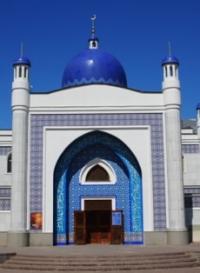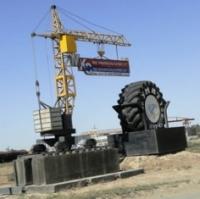You are here
Sights in Atyrau.


Tours on sights Atyrau.
“There is still one of which you never speak
Marco Polo bowed his head.
'Venice,' the Khan said.
Marco smiled. 'What else do you believe I have been talking to you about?
The emperor did not turn a hair. 'And yet I have never heard you mention that name.
And Polo said: 'Every time I describe a city I am saying something about Venice”
Italo Calvino.
Express Kazakhstan tour.
The city is relatively compact, and it does not take too long to walk from one end to the other (if you decide to brave the mosquitoes). A good starting and orientation point is the pedestrian bridge, built in 2002, between Pobedy (Victory) Park and the residential zone for the oil workers.
This suspension bridge between Europe and Asia has a span of 405 metres. Across the bridge, you can walk along the riverbank through the city towards the north, passing the river's horseshoe bend until you come to the road bridge.
This is the city centre, divided into two by the river and stretching no more than two to four blocks away from the riverbank. Here and there, a few parks testify to attempts to conquer the saline soil and produce some greenery.
Two museums are located on the crossroads between Momysh Uly Street and Azattyk Avenue, the Local History Museum (1 Momysh Uly Street) and the Museum of Applied Arts (11 Azattyk Avenue). Both are well worth a visit, like all regional museums of their kind in Kazakhstan.
The Museum of Regional Traditions highlights the life and work of Makhambet Utemisuly (Utemisov), who lived in the area of Guriyev in the first half of the XIX Century and whose aphoristic and expressive poetry greatly contributed to the education of the common people.
Also interesting is the exhibition about Sarayshik, the capital of the Golden (Nogai) Horde that was first destroyed by Tamerlane in 1395 and later again by the Cossacks in 1580. Remains of the walls of Sarayshik have been found recently during construction work on the Ural about 50 kilometres north of Atyrau.
The city's own Golden Man can also be seen here. It is an accurate replica of the golden mantle of a Samartian warrior and dignitary. This treasure and many other revealing objects dating from the lst/2nd centuries AD were excavated in 1999 near the hamlet of Kulsary at the burial site of Araltobe.
A mosque is located on Satpayev Street, just over a kilometre to the west of the road bridge. A second one, the Kuspan-Molla Mosque, is to the northwest on the street of the same name. The freshly restored Uspenskiy Cathedral adds cheer to the remains of the old town on Isataya Avenue, some way northwest of the city centre.
The cattle market of Tuma, on the western edge of town, is recommended to those who like "authentic" impressions of day-to-day life. The fishing port Atyraubalyk and the river port to its south, with the oil terminals in the background are also rather colourful. The best way to see them is from the western riverbank, since direct access to the sites is impossible.
Authority:
The guidebook across Kazakhstan . Authors Dagmar Schreiber and Jeremy Tredinnick. Publishing house "Odyssey".2010.
Alexander Petrov
photo’s







